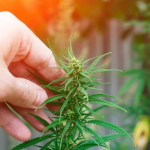Good is Not a Number
In the early days of legalized cannabis (not that long ago, really), it wouldn’t have been unusual for early entrepreneurial growers and producers to engage in conversations that went something like this:
(Q) How did the harvest go? (A) Really good.
(Q) How was the yield? (A) Not as good as last time.
(Q) How efficient was the extraction process? (A) We got a good amount.
(Q) How potent was the concentrate? (A) It was a really good batch.
Some of you (e.g. baby boomers) could probably imagine hearing a conversation like this in a Cheech and Chong movie. However, those days are over. Now that 30 states and the District of Columbia have legalized use of cannabis for therapeutic purposes while 5 states allow recreational (as of this writing, with more to come in both areas), the cannabis industry is big business and getting the attention of investors as well as entrepreneurs hungry for knowledge in every aspect of the burgeoning business. Current enthusiasm is boundless, evidenced by the high attendance at cannabis conferences and the emergence of numerous trade organizations, specialty cannabis publications, and business and technology participants across the entire supply chain, from agriculture to retail.
However, like most industries, with big business comes regulations. Even though the federal government has yet to formally approve the use of cannabis for any purpose at all, the states are now involved and trying to determine precisely what it is they need to regulate and how to go about it. To adhere to the cannabis industry’s new incoming regulations, they need efficient and accurate testing methods. Relying on outdated and inconsistent casual testing puts the growers and retailers at risk for stricter government oversight, regulatory fines, expensive recalls, time-consuming crop remediation or possibly even destruction of an entire crop. Moreover, human safety is put at risk from microbial contamination, undocumented potency, and other conditions.
The questions in the conversation (and documentation) with growers and producers today now need to be something along these lines:
(Q) What is the percentage concentration (in milligrams per gram dry-weight) of cannabinoids in the batch sample (include THC, THCA, CBD, CBDA, CBGA, CBC, and CBN)
(Q) What is the concentration (in parts per million) of residual solvents present in each sample?
(Q) What is the concentration (in parts per million) of residual pesticides present in each sample?
(Q) What are the water activity level (Aw) and moisture content of the batch?
(Q) What is the concentration of heavy metals (micrograms per gram), including arsenic, cadmium, lead,and mercury?
I could go on, but you get the picture. At this point, each state has their own testing rules and standards. If you are involved in the cannabis supply chain, you need to recognize the importance of accurate testing, from seed to final product. It can make or break your success.




